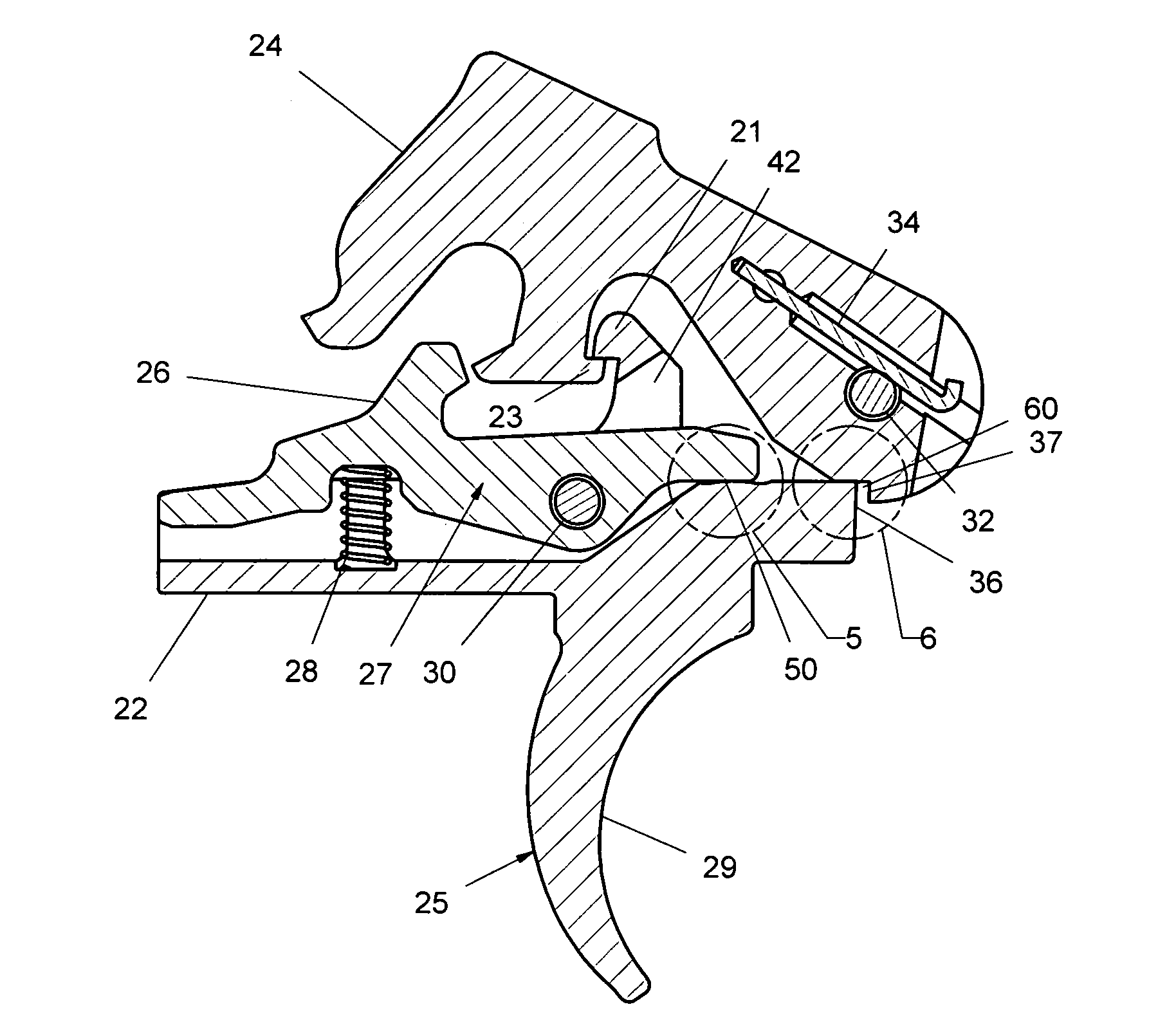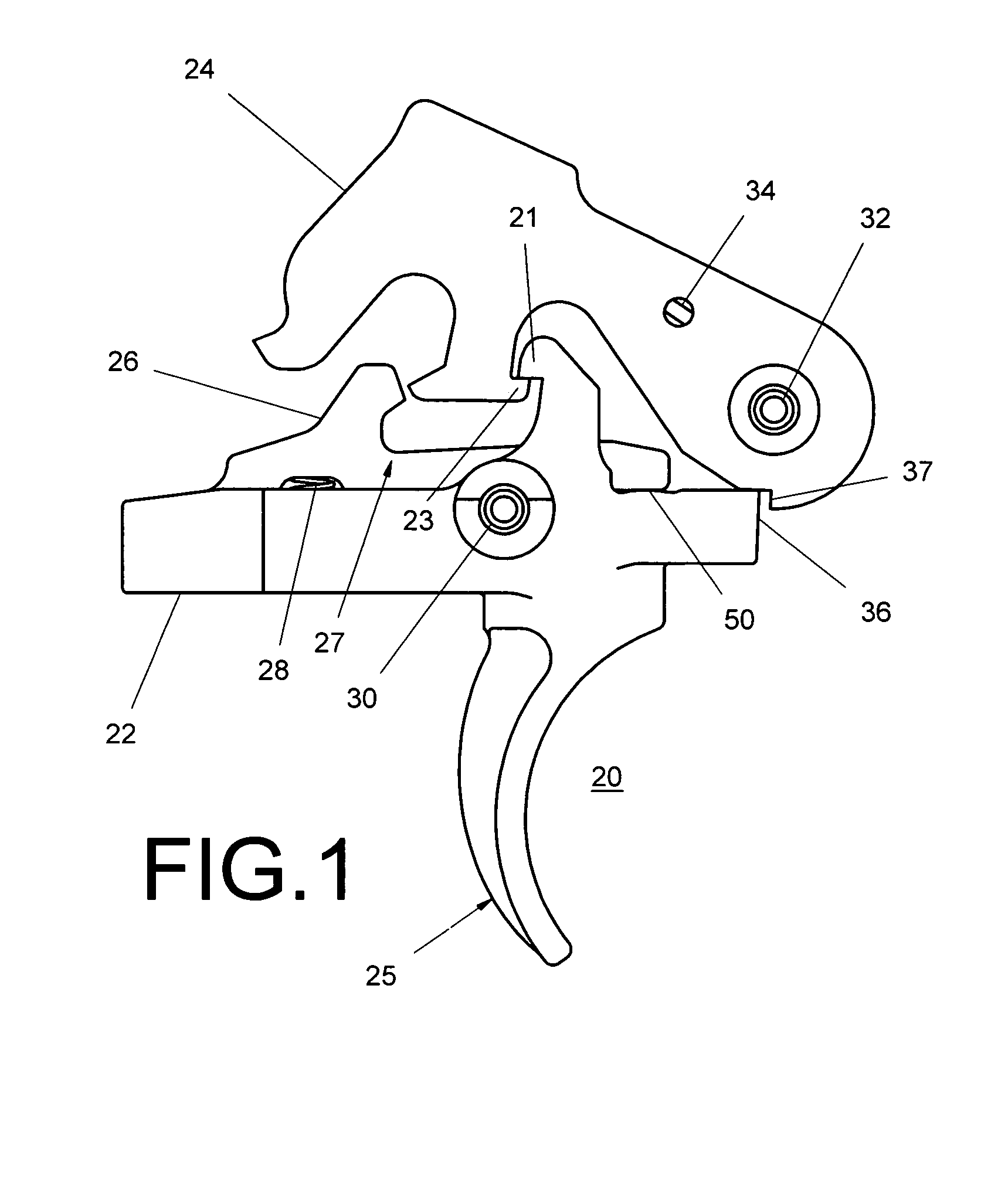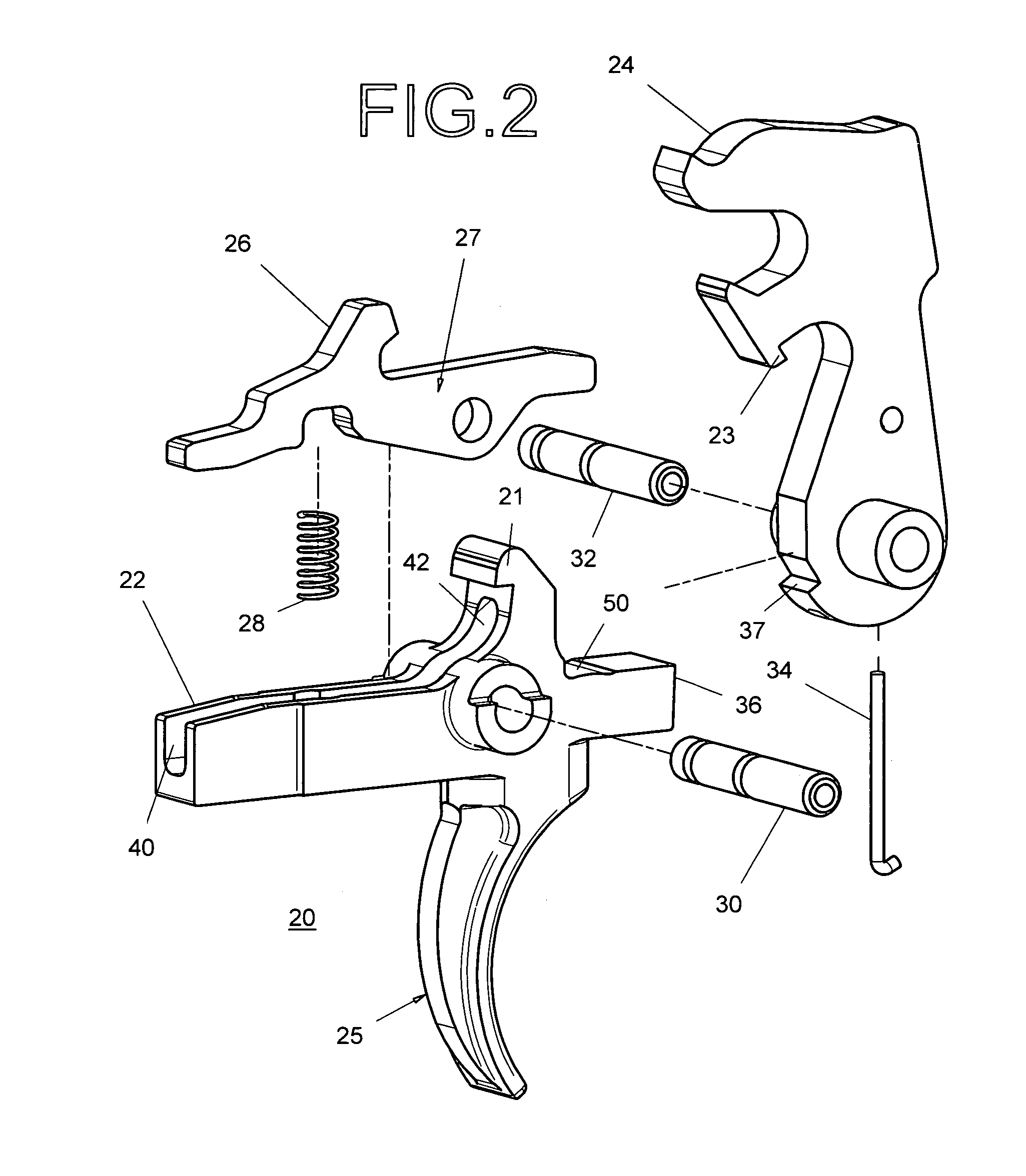Multi-stage trigger for automatic weapons
a multi-stage, automatic weapon technology, applied in the direction of breech mechanism, small arms, ammunition loading, etc., can solve the problems of loss of life, unsecured threaded screws such as those found in the u.s., 324 (arnold w. jewell) having a tendency to become threadedly unsecured after prolonged use, etc., to facilitate a consistent trigger pull weight, easy and cost-effective manufacturing, simple and robust sheet metal disconnector
- Summary
- Abstract
- Description
- Claims
- Application Information
AI Technical Summary
Benefits of technology
Problems solved by technology
Method used
Image
Examples
Embodiment Construction
[0036]Turning now to the drawings in which like reference characters indicate corresponding elements throughout the several views, as used herein, the word “front” or “forward” corresponds to the end of the trigger assembly where the safety sear is located (i.e., to the right as shown in FIGS. 1, 2, 3, 4); “rear” or “rearward” or “back” corresponds to the direction opposite the end of the trigger assembly where the safety sear is located (i.e., to the left as shown in FIGS. 1, 2, 3, 4).
[0037]Attention is first directed to FIG. 1 which illustrates the trigger mechanism, generally designated 20 and FIG. 2 which is an exploded view of the trigger mechanism 20 of FIG. 1. It will be understood that trigger mechanism 20 is intended to be employed with any of the various M16 type firerms; however with minor modifications it could be more widely used for other firearms as well. M16 type firearms include the AR15 family of rifles, the M4 carbine family of rifles, the SR25 and AR10 larger cal...
PUM
 Login to View More
Login to View More Abstract
Description
Claims
Application Information
 Login to View More
Login to View More - R&D
- Intellectual Property
- Life Sciences
- Materials
- Tech Scout
- Unparalleled Data Quality
- Higher Quality Content
- 60% Fewer Hallucinations
Browse by: Latest US Patents, China's latest patents, Technical Efficacy Thesaurus, Application Domain, Technology Topic, Popular Technical Reports.
© 2025 PatSnap. All rights reserved.Legal|Privacy policy|Modern Slavery Act Transparency Statement|Sitemap|About US| Contact US: help@patsnap.com



